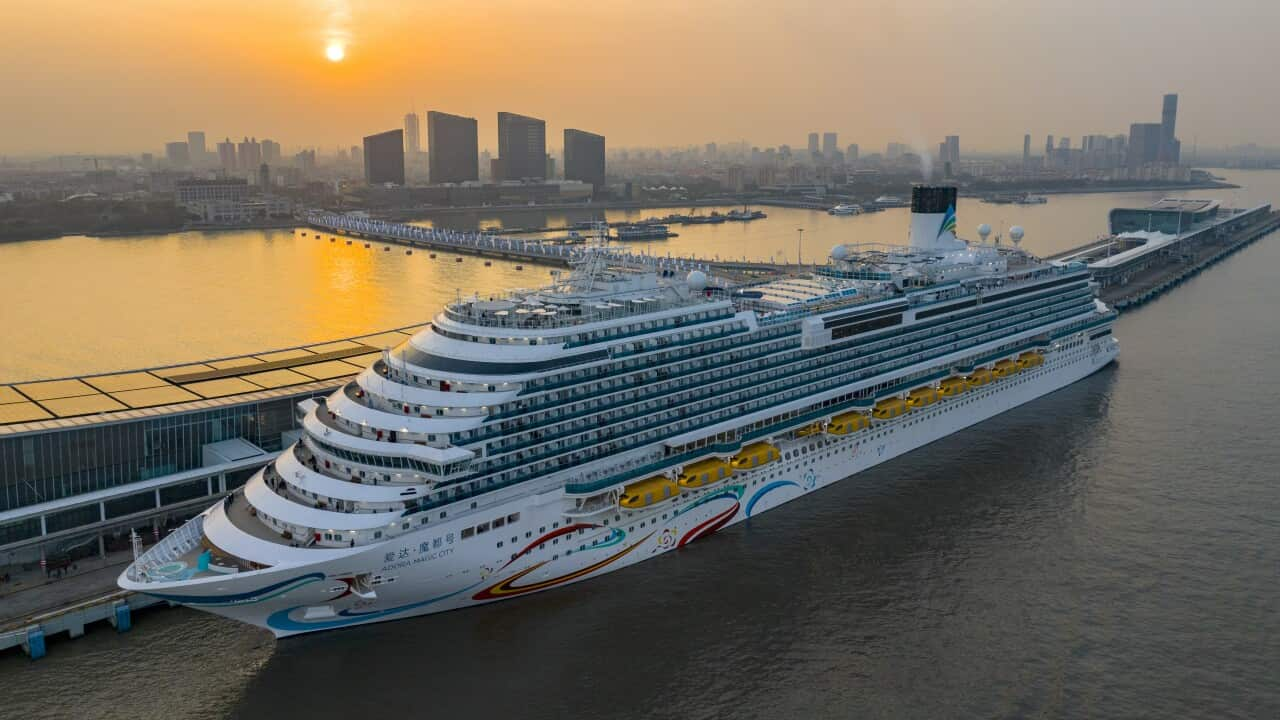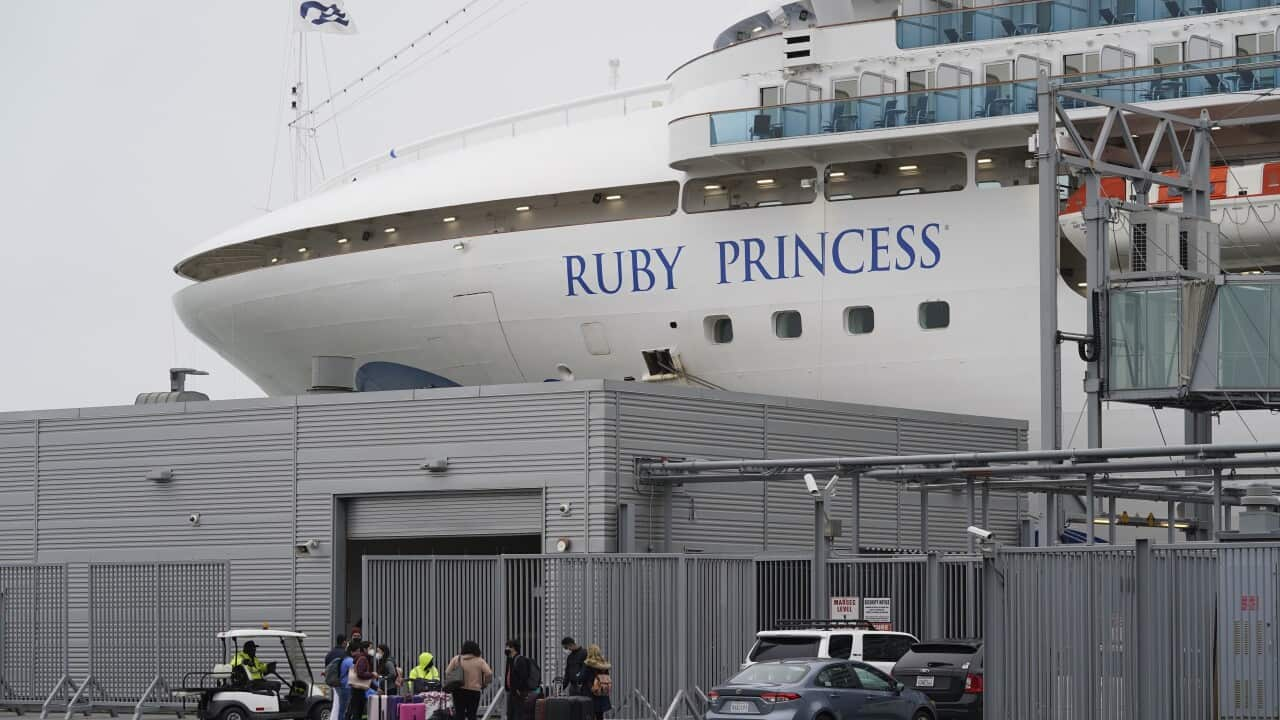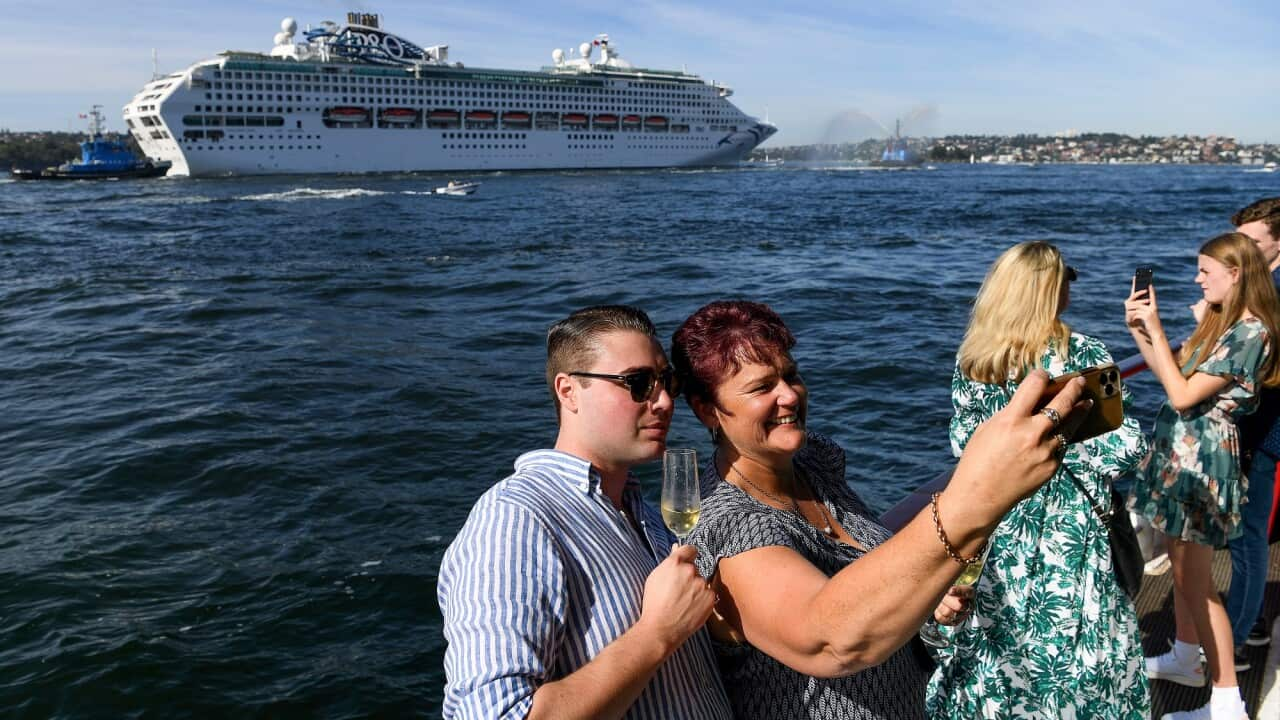Key Points
- Over 1 million people are forecast to take a cruise in Australia this summer, almost a third more than pre-pandemic.
- However, experts warn that cruising remains a major source of air, water and land pollution.
- Research suggests one large cruise ship can have a greater carbon footprint than 12,000 cars.
Despite damning associations with virus outbreaks in the not-so-distant past, about 1.1 million people are forecast to take a cruise in Australia this summer, according to industry figures.
That's almost one-third higher than pre-pandemic levels.
A recent double outbreak of COVID-19 and gastroenteritis on the Grand Princess cruise liner and other post-pandemic virus outbreaks have seemingly done little to disrupt the boom.
It’s welcome news to those within the industry, but for others, the popularity of these gigantic seaborne resorts is a worrisome trend.
How bad are cruises for the environment?
The available research on the environmental impacts of cruising paints a bleak picture.
A December 2021 report in the Marine Pollution Bulletin noted that “cruising, despite technical advances and some surveillance programmes, remains a major source of air, water (fresh and marine) and land pollution affecting fragile habitats, areas and species, and a potential source of physical and mental human health risks.”
These health risks, researchers noted, impact not only the crew and passengers on board the vessel but also the people on land, including the residents of the places where these cruise ships come to dock.
The sewage, waste, air and water pollution of cruise ships also take an environmental toll, the researchers wrote in the journal, which is published on behalf of the International Maritime Organization.
“In this context, we argue that the cruise industry should be held accountable with more monitoring and regulation to prevent or minimise the growing negative environmental and human health impacts,” the authors concluded.
“Despite technical advances to reduce environmental footprint… cruising, one of the fastest-growing sectors of the tourism industry, remains a major source of environmental pollution and degradation,” the report added.
A far more optional source of pollution
The environmental pollution caused by cruise ships is far more avoidable than that of modes of transportation such as cars, trains and planes, due to their necessity in our day-to-day lives.
“The thing to remember is that cruises don't really serve a transport purpose really,” Liam Davies, associate director at the Institute for Sensible Transport – a group of planners with a focus on making transport more sustainable – told SBS News.
“The purpose of them is to be fun to float around on the water and burn diesel. So, it's almost all entirely avoidable emissions,” he added.
“The other thing to think about is that they tend to burn a very, very poor quality fuel source called bunker oil. And bunker oil is the sludge at the bottom of refineries when you create diesel, so it's low-quality diesel and it’s incredibly high in sulphur dioxide.”

The Grand Princess Hamilton cruise was recently hit with a double outbreak of COVID-19 and gastroenteritis. Source: AAP / James Ross
Risk mitigation steps
The world’s largest cruise line trade association, the Cruise Lines International Association (CLIA), provided SBS News with a statement on the "work cruise lines have mounted internationally to ensure environmental protections and pursue net zero emissions by 2050 in line with the Paris agreement and International Maritime Organization."
“An enormous amount of progress is being made in this area and cruise lines continue to invest billions of dollars in new ships, new technologies and new fuels in pursuit of their goals,” CLIA wrote.
In April 2022, CLIA announced a series of sustainability commitments.
“We are reducing the carbon footprint of our ships while at berth and at sea, investing in advanced environmental technologies and partnering with cities and ports on sustainable destination management.”
“By equipping cruise ships with the ability to connect shoreside electricity, and using it where available, the cruise industry is prepared to eliminate emissions while at port for the benefit of local communities,” CLIA announced at that time.
CLIA has also proudly touted the benefits of the industry, reporting that Australia’s cruise industry generated a record $5.63 billion for the national economy during the 2022-23 financial year.
Low-grade fuel leads to higher emissions
As of 1 January 2020, ships have been prohibited from using fuel oil containing more than 0.5 per cent sulphur.
As Davies points out, however, this threshold is still far higher than the limit imposed on diesel fuel in Australia, for example, which is 0.001 per cent.
Transport & Environment, a leading European clean transport group, also notes that a cruise ship, depending on destination, could be relying on a fuel whose sulphur content is up to 500 times higher than Europe’s sulphur standard for cars.
In a study published last year, the group estimated that cruise ships sailing in European waters in 2022 emitted more than eight million tonnes of CO2 – the equivalent of 50,000 flights between New York and Paris.
Other available research draws similarly worrisome parallels, with one study from the University of Exeter suggesting that “a large cruise ship can have a carbon footprint greater than 12,000 cars”.
“Passengers on an Antarctic cruise can produce as much CO2 emissions while on an average seven day voyage as the average European in an entire year,” the study also found.

Cruise ships' health risks impact not only passengers on board the vessel, but also the people on land, including the residents of the places where these cruise ships come to dock. Source: AAP / Bianca De Marchi
More damaging than planes and hotels?
Despite recently introduced regulations and sulphur caps, a June 2023 report from Brussels-based NGO Transport & Environment found that “Europe’s 218 cruise ships emitted more sulphur oxides than 1 billion cars in 2022, or 4.4 times more than all the continent’s cars.”
A 2010 study published in Energy Policy, a monthly peer-reviewed academic journal covering research on energy policy and supply, found that on average, cruise ships have more than three times the emissions of planes and 12 times the emissions of hotels.
This last point of comparison is important.
Cruise ships, after all, are what Davies describes as “effectively very large floating hotels.” And because of that, they need to continually power themselves even when in port.
There are two ways to do this, Davies explained.
A cruise ship can either use ship-to-shore power, where the vessel is essentially hooked up to a long extension cord and plugged into the main on-land electricity grid, or, it can continually run its engines, using them as power generators.
“Most of them, unless provided with ship-to-shore power, will just be running their own generators,” Davies said.
All of this has fuelled the ire of environmental activists who are increasingly calling on the cruise ship industry – the fastest-growing sector in the travel industry overall – to clean up its act.
Sincerity of pledges
While environmental groups have questioned the sincerity of such pledges, however, the growing environmental stigma around cruise ships in recent years has done little to dent the industry’s soaring popularity.
The latest industry association report projected that cruise ticket sales would bounce back from the pandemic slowdown and return to record 2019 levels.
Carnival Cruises, the world’s largest cruise ship company, is slated to make 846 domestic port calls in Australia alone in 2024 – a major increase over last year’s 575.
Yet according to Friends of the Earth (FoE), an international federation of environmental activists, Carnival is also “the most notorious cruise company for their environmental impacts.”
The cruise line was ranked as one of the worst performers in FoE’s latest annual Cruise Ship Report Card, which evaluates 18 cruise lines on environmental factors such as sewage treatment, air pollution reduction, water quality compliance and transparency.
The Port Authority of New South Wales revealed in October 2023 that they were expecting a 16 per cent increase in cruise ship arrivals for the 2023-24 summer season compared with the year before. A large majority of cruises in Australia start and end their voyage in Sydney and Brisbane.
The upcoming season, the port authority added, was “set to be the biggest since the pandemic and one of Australia’s busiest ever.”
“Cruising has made an incredible comeback,” CLIA managing director Joel Katz declared at the time.
“And cruise fans have been heading back to sea in droves.”












